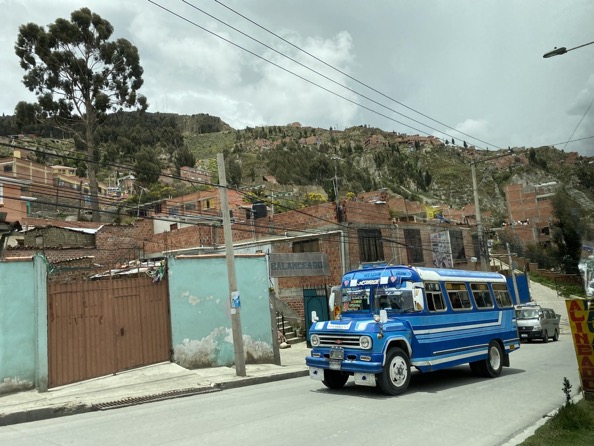Resilient Communities in Bolivia 🇧🇴

La Paz, Bolivia; January 2020
At the end of January 2020, after completing my humanitarian mission in Ecuador, I travelled to Bolivia. This visit had a dual purpose—to assess recovery projects following the devastating forest fires and to visit migration centres in La Paz, where Venezuelan refugees and migrants were seeking support.
Throughout the trip, I was assisted by AnaMaria and Sylvia, whose expertise, dedication, and deep knowledge of the region were invaluable. Their support made the journey not only more effective but also more enriching, as we navigated Bolivia’s complex humanitarian landscape together.
This trip was another powerful reminder of human resilience—whether among displaced families striving to rebuild their lives or communities recovering from environmental disasters, the determination to move forward despite challenges was inspiring.
La Paz – A City of Asylum and Struggle
We began our mission in La Paz, visiting refugee and migration centres, which were providing assistance mainly to Venezuelan migrants. It was eye-opening to see how local communities and organisations were trying to support those in need, despite limited resources, bureaucratic obstacles, and legal uncertainties. Many Venezuelans had arrived with little more than hope, seeking stability in a country that, despite its own struggles, had become a place of refuge.
Despite these challenges, the spirit of solidarity was everywhere. Volunteers were offering language courses, job training, and legal advice, helping people integrate into Bolivian society. The humanitarian response was largely grassroots-driven, showing the power of community-led initiatives in times of crisis.
Beyond the refugee centres, I took time to absorb the city itself. La Paz is extraordinary—perched high in the Andes, its steep streets, sprawling markets, and dramatic landscapes make it unlike any other capital. The teleférico cable cars, gliding over the city, offered breathtaking views of Illimani Mountain, a snow-capped guardian towering over the valley.
Santa Cruz, Roboré, and San José de Chiquitos – Recovering from the Fires
After La Paz, we flew to Santa Cruz, Bolivia’s largest and most dynamic city. From there, we travelled deeper into Chiquitania, an area that had been severely affected by forest fires the previous year.
Roboré and San José de Chiquitos were among the worst-hit areas. We visited communities that had lost homes, farmland, and livelihoods, yet were working hard to rebuild. The focus was not only on recovery but also on strengthening resilience—ensuring that future fires would not be as devastating. Efforts included improved fire prevention strategies, reforestation projects, and training for local emergency response teams.
One of the things I enjoyed most during these field visits was observing the stunning architecture of small towns and villages. San José de Chiquitos, in particular, stood out—its beautifully preserved Jesuit Mission architecture, with elegant wooden churches and wide colonial streets, was a fascinating blend of European and indigenous influences.
Connecting with Indigenous Communities
What made this trip even more special was the opportunity to interact with indigenous communities. Their knowledge of the land, traditional farming techniques, and deep connection to nature were invaluable in shaping local resilience efforts. They welcomed us with warmth, sharing their stories and perspectives, which provided insights that no report or briefing could ever capture.
Their ancestral wisdom played a key role in sustainable land management, particularly in areas affected by the fires. Learning from them was a reminder that disaster recovery is not just about rebuilding—it’s about preserving traditions, adapting to change, and empowering local voices.
A Meaningful Conclusion
After completing our mission, I flew back to Panama City from Viru Viru Airport, reflecting on everything I had witnessed in Bolivia. This trip, like so many before, reinforced the importance of community-led recovery efforts—whether for displaced people seeking refuge in La Paz or for rural families rebuilding after environmental disasters.
Despite the hardships, there was hope, strength, and a determination to move forward—proof that even in the face of immense challenges, human resilience knows no bounds.
Click here to access the album.
